Scindapsus Pictus is a beautiful green vine with silver splashes of color on its leaves. These attractive variegated plants are commonly found growing wild in Southeast Asia, New Guinea, Queensland and some Pacific Islands.
We love them for their velvety bluish-green leaves with silvery white splashes. Scindapsis is commonly known as the Silver vine, Silver Pothos, Satin Pothos, or Silver philodendron.
There are several varieties of scindapsus vine that express variegations in different patterns. The Silver splash, Exotica, and Silver lady are a few of the most common.

Is Scindapsus a Pothos?
Scindapsus (also known as silver pothos) is commonly labeled a pothos. Scindapsus is a tropical aroid vine, like a pothos…but Scindapsus isn’t actually a Pothos Plant . The pothos belongs to the epipremum genus and the scindapus belongs to its own genus.
Technically, the only real difference between them lies in the amount of seed they produce. That is why they are not in the same genus. Most plant parents don’t care about how many seeds a plant grows, or which genus it is in.
The difference plant owners will notice and care about are the leaves. Scindapsus has dark green leaves with a velvety texture and blistered variegations which give them a silvery look.
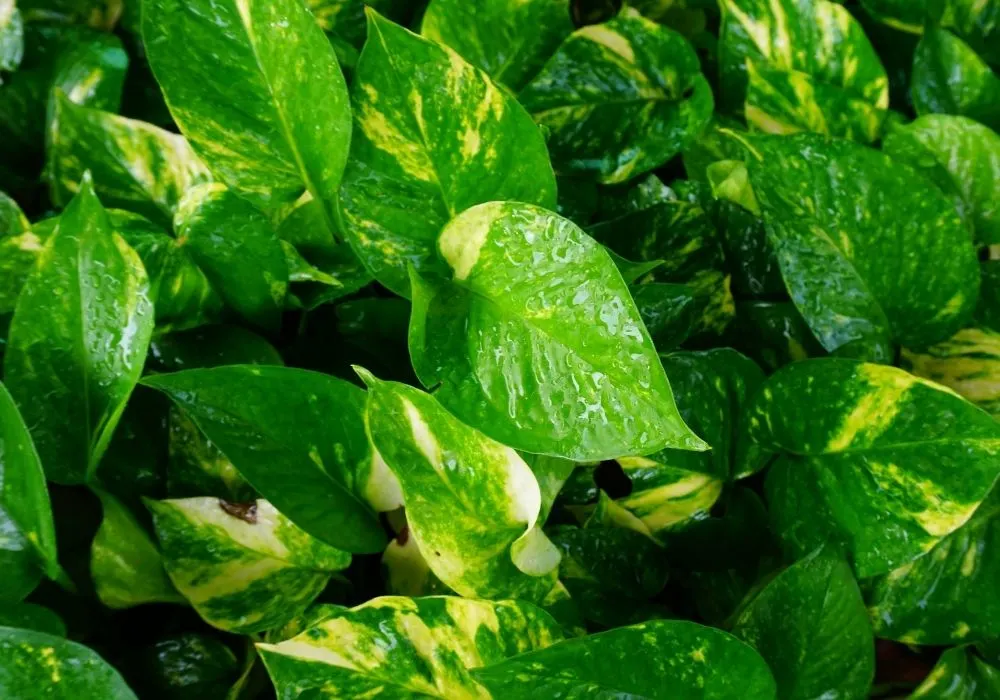
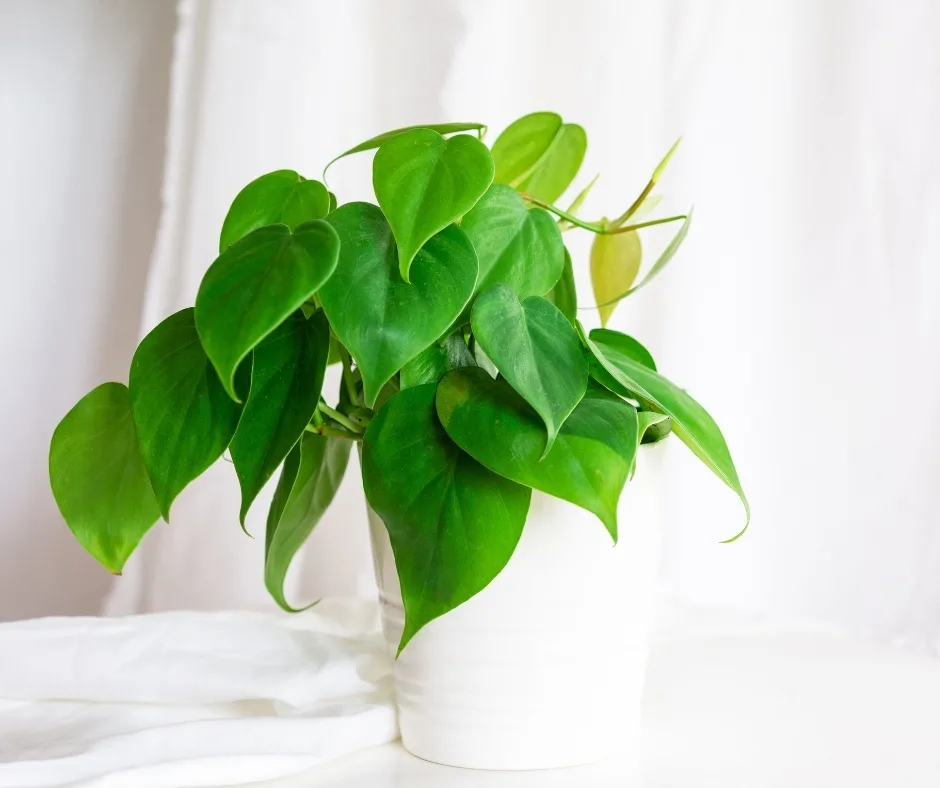
Quite different from the smooth thick leathery leaves of Pothos vines. Pothos are often variegated but they do not express the silvery blistered variegations the Scindapsus is known for.
Likewise, a Scindapsus is NOT a philodendron, although they are often confused as one (The philodendron Micans is very similar).
A scindapsus has its own genus and distinctive characteristics apart from both the Pothos and Philodendron vines.
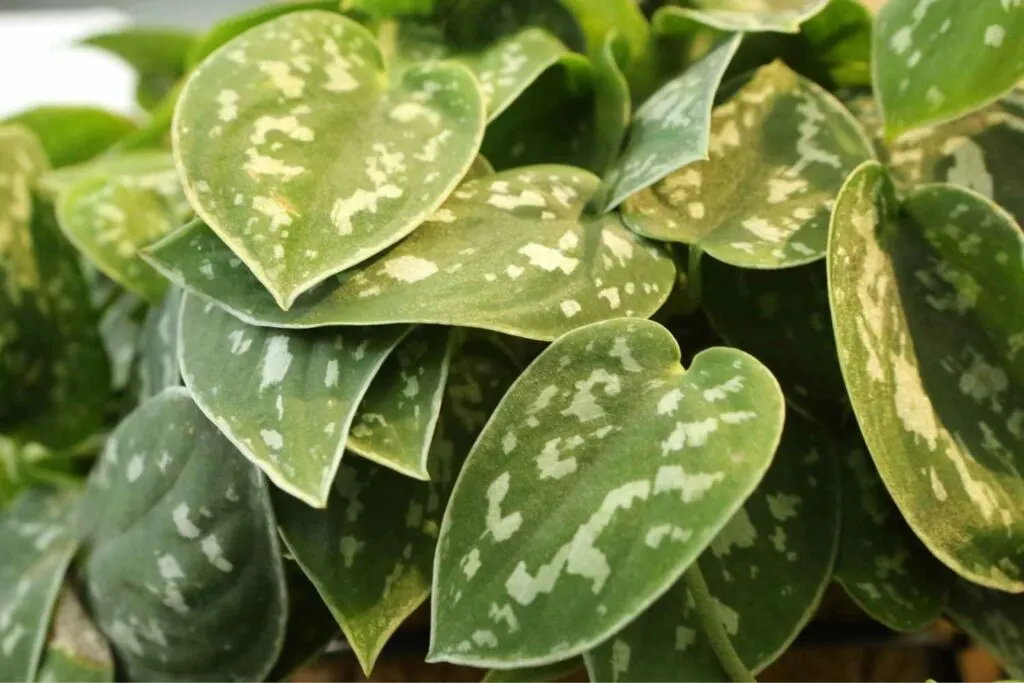
What Causes Blister Variegation in Scindapsus?
One of the distinctive features of Scindapsus pictus is its silvery reflective randomly placed variegations. This shimmering look is caused by Blister Variegation.
Blister variegation is a result of the plant growing air spaces under its leaf surfaces. Blister variegation is caused by the plant growing air pockets under the thin translucent top layer or ‘skin’ of the leaf. This causes a reflection in the leaf surfaces that shines out white, or silvery, as spots and splashes on the dark green leaf.
The Scindapsus plant blister variegations create a 3D shimmery effect in proper lighting. When the light shines on the blister variegations the leaf glows and shimmers like silver.
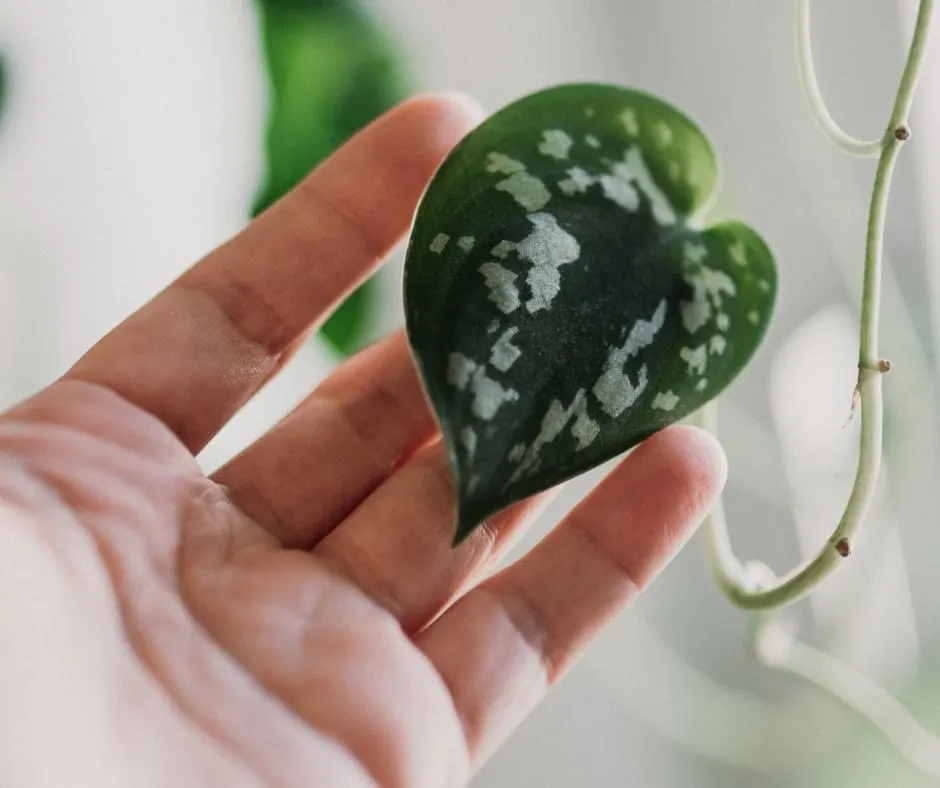
Scindapsus Plant Size And Training:
Scindapsus Pictus vine grows to about 10 feet long. These indoor foliage plants can be grown in many different ways. They are a happy plant in general and will accommodate a lot of different growing styles.
This plant is often grown as a hanging planter, trained onto a trellis or Moss Pole to climb, or grown as a tabletop plant.
Growing Satin Pothos as a Hanging Basket:
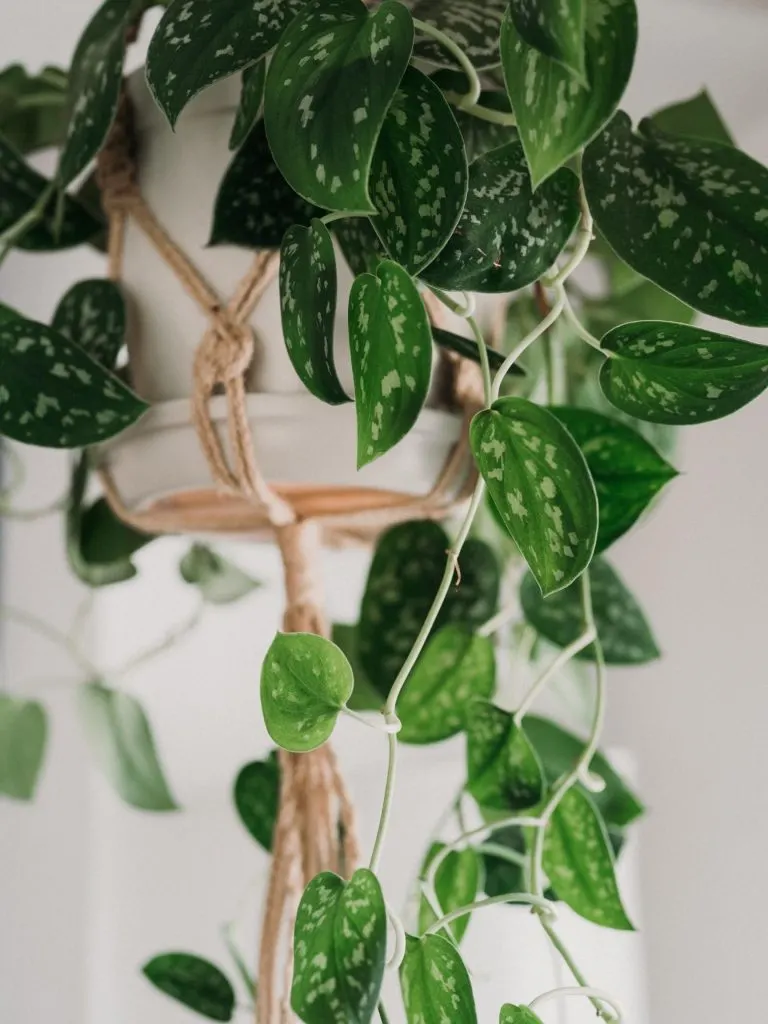
Satin Pothos makes a graceful, delicate and elegant hanging basket. It’s especially effective planted in a white of light colored planter that shows off the dark green variegated leaves. Or place it in a white or light colored room with medium to bright lighting.
All vines grow as trailers and will naturally trail out of baskets so this is an easy way to grow them. Here are some tips for growing a full and bushier hanging basket.
- Pruning vines causes them to grow two new vines out of each cut. to make a bushier Scindapsus cut the long vines at the top of the planter so two new vines will grow down to replace the single.
- You can also plant the cut single vine back into the planter in moist soil. If kept moist, the cut vine will regrow roots in the soil and eventually grow more vines for you. This makes a bushier hanging basket.
- Cut the vines to the length you enjoy so your hanging basket is well balanced with vine length being approximately the same all around the basket.
- To keep the vine growing evenly rather than always pointing toward your light source, turn the plant away from the light every time you water. This will encourage the vines to show themselves off to the room you are displaying them in rather than to the window. They will keep growing to the light so constant turning is necessary every week or so to maintain a balanced plant.
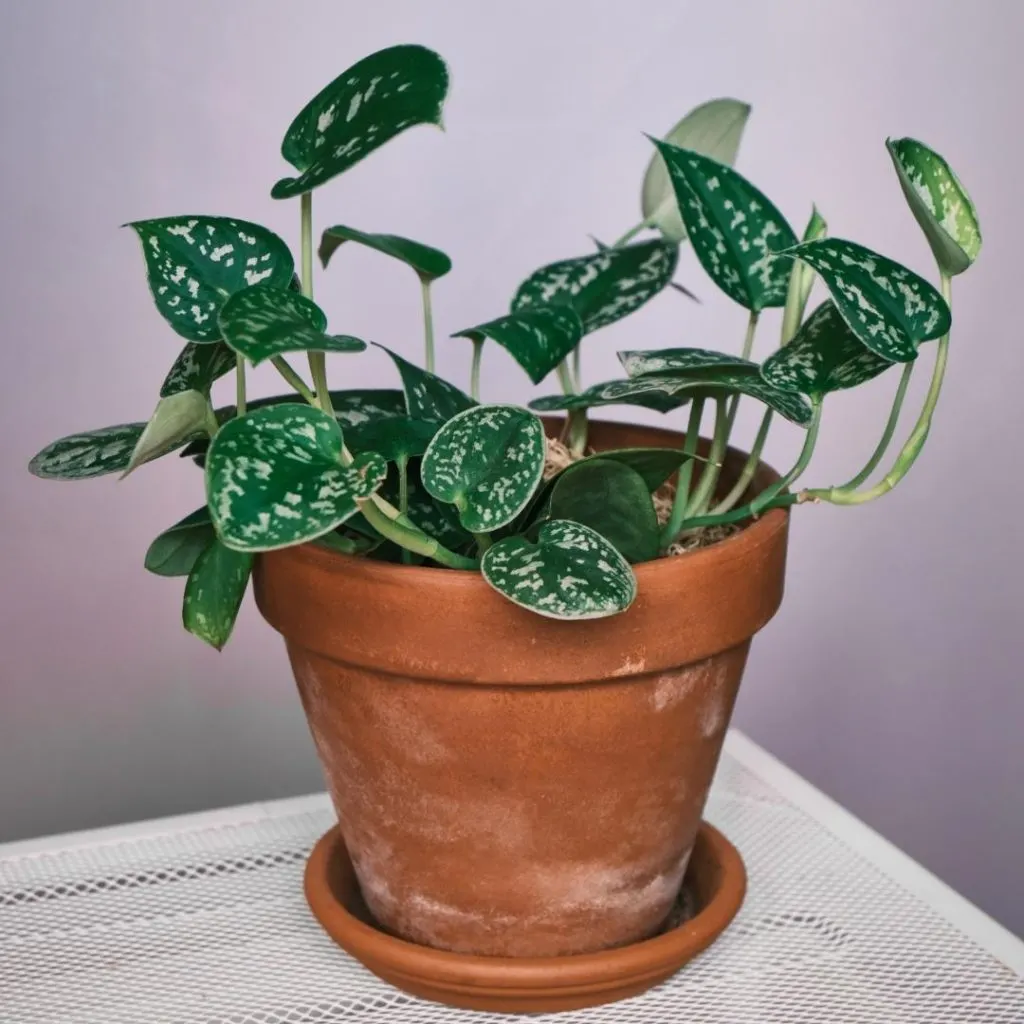
Growing the Silver Vine on a table top:
This is quite doable. They have smaller sized leaves and the vines can either be trimmed off when they reach the table top or you can let the vine grow and twine the vine around the pot and drape it attractively as you desire. Pruning is eventually necessary if you want a vining plant as a tabletop plant.
Growing Scindapsus Pictus on a Moss pole Or Trellis:
Like the Pothos and Philodendron vines, scindapsus likes to climb. It is easy to train onto a pole or trellis. but you will have to help it by trying the vine to the place you wish it to start climbing. Then as the vine grows you can arrange it with more ties or strategically drape it on the trellis as you wish.
To Grow scindapsus vines on a moss pole, Read our post (with a video) on How to Grow Plants on a Moss Pole.
Sources For Plants:
This attractive plant can be found in local stores or nurseries. Although, it is not quite as common as the golden pothos plant and you may run into trouble locating it. Local sellers and friends are a great way to secure cuttings.
We recommend you look for houseplants in your local online market places, local garden shop or nursery. Purchasing locally offers you the chance to look over the plant and make sure it is what you want.
ONLY Buy plants in excellent condition and ALWAYS check plants for pests before you purchase them. Not sure how to tell if a plant has pests? Read our guide on the seven most common plant pests here.
We often bring pests into our home from plant shops. They are easy to miss. That is why we recommend a plant quarantine of about a month before mixing new plants in with your others.
If you prefer to shop online, Etsy has many small shops that are expert at shipping plants to you in great condition. Always look for shops with good reviews.

Scindapsus Care Guide:
Scindapsus vines of all types are forgiving plants with attractive foliage. They make a good houseplant. The care for these plants is extremely similar to pothos. They’re both relatively easy to grow and care for, so they’re ideal for beginner plant parents.
| Familiar Names: | silver vine, Silver Pothos, Satin pothos, Silver philodendron, |
| Scientific Name | Scindapsus Pictus |
| Plant Family | Araceae |
| Care Difficulty | Easy |
| Temperature | Ideal Temperature range is 65 to 85 degrees F. |
| Watering | Water thoroughly when the soil is dry down to the root zone. |
| Soil | Light friable well draining soil is best for scindapsus plants. Standard potting soil with perlite mixed in works well. |
| Lighting | Bright indirect light will ensure best coloring |
| Growth | Scindapsus is a trailing vine that grows to 10 feet long. |
Special Tips For Scindapsus Care:
Once you learn the normal conditions for Scindapsus it will grow well for you. Here are some highlighted tips for keeping a happy silver vine.
Watering correctly is a critically important part of care for the scindapsus pitcus. As with other aroids, Root rot is a common cause of death for this plant. Make sure you are using a pot with a drainage hole and the appropriate soil mix for the plant.
TIP: Before watering, do a soil check: Dig your fingers (or a moisture meter) into several inches of soil. Feel the soil. It should be dry to the roots before you add more water. Aroids will rot in constantly moist soil.
Silver Pothos enjoy high humid conditions. They do best at over 40% humidity up to 70%, or even higher. These plants do not enjoy misting like pothos do. The velvet on their leaves can encourage viral infections. Rather use pebble trays, plant groupings or a humidifier to increase humidity for the scindapsus plant.
This plant will do best in bright indirect light. It can tolerate lower lighting but it might grow very slow in low light. Do not place this plant in a spot where it receives hours of direct sunlight. This can cause the leaves to lose the variegation and also get sunburned.
Printable Care Guide:
Scindapsus Pictus Plant Care Guide
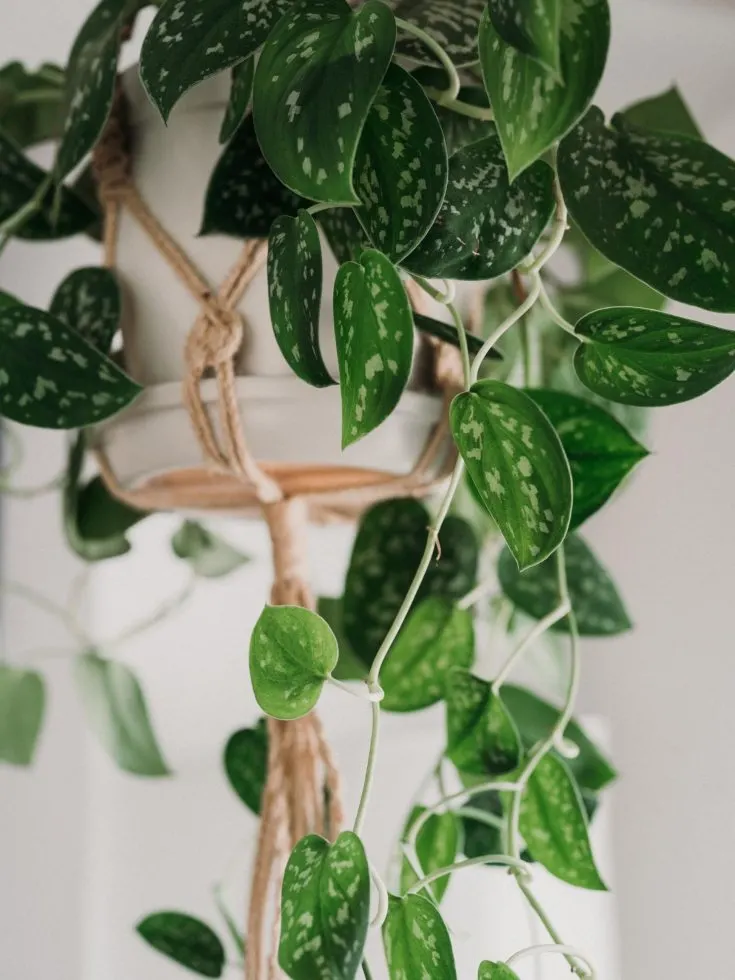
The scindapsus pictus otherwise known as the satin pothos is a beautiful evergreen vine with green leaves and silver splashes of color.
This lovely vine is a perfect beginner houseplant.
Materials
Instructions
Soil Preference:
- This aroid requires a light soil.
- A mix of potting mix (peat based works best) and perlite will keep the roots happiest.
- Our mix for this pothos is 60 % potting mix to 40% perlite.
- A heavy soil potting mix is not recommended for aroids.
Pot Size and Type:
- The scindapsus can be grown in a hanging pot, or a regular pot with a trellis or moss pole.
- If you want to encourage faster growth choose a pot about 2 inches wider in diameter than the current pot.
- Any well drained pot can be used. It MUST have drainage.
- Repot every second year or when roots come out the drainage holes on the pot bottom To the next pot size up.
- Don't jump to a huge pot from a small one unless you wish to encourage faster growth. Just go to the next size up pot.
Lighting:
- The scindapsus vines enjoy bright indirect or dappled light.
It will tolerate lower indirect light it if has some brighter moments in the day. - Some filtered sunlight from a window will be appreciated.
- Shield this aroid from strong direct light in summer south and west sunny windows. The leaves will burn, and you can risk losing the variegation.
- Tip: Window sheers or blinds can offset some brief periods of high direct light.
Watering:
- Water your satin pothos when the soil is dry down an inch or so. Aroids do not like to be overly wet. Try a watering schedule of every other week.
- Watering is best done on a regular schedule so the plant is not over or under watered. Both can cause stress on the plant.
- This tropical plant enjoys humidity. In dry climates this plant will thrive with a humidifier nearby. or set it in your kitchen or bathroom. For a really dry climate frequent misting will help.
- In dormant winter months reduce watering to when the soil is dry down halfway .
- Never let this plant get wet feet. If the soil is compacted the bottom of the soil can remain wet which encourages root rot and fungus gnats. If you see yellow leaves on your plant you are probably overwatering.
How to Fertilize:
- Apply a good quality fertilizer (linked in materials) monthly through Spring and summer.
- Decrease feedings by late Fall and allow the pothos to rest through the winter months.
- Look for brown spots on the leaves of your plants. This may indicate an over concentration of salts in the roots from over feeding. It can burn the leaves.
Temperature:
- Keep scindapsus at a low of 65 Degrees F. to upward of 85 Degrees F. It enjoys warmth and humidity.
Pruning and Training:
- Pruning will give you a fuller plant with more even growth. Unpruned vining plants will trail
- Sharp Hand pruners are preferred for pruning. They will give a clean cut that will heal quickly.
Table Top Plants:
- It’s easy to prune and shape these plants to whatever length and fullness you desire.
- As a table top plant cut the trailers back evenly all around the pot. If you want the pot fuller add more starts of the plant.
Pests:
- This plant is not fussy and resists pests. However all plants can get attacked by pests.
- Stress by longterm overwatering, poor light, extreme temperatures and soil conditions are contributors to plant stress..
- Spider mites, mealy bugs, scale, thrips and whitefly are the most common houseplant pests you will see.
- Read our post on How to get rid of aphids and other pests with our homemade pesticide soap recipe or neems oil.
- To minimize the possibility of pests be sure to check all nursery plants before bringing them home.
- Quarantine all new plants until you are sure no pests live in them.
How to Propagate:
- Propagation is easily done through leaf node stem cuttings.
- You need a 3 to 6 inch leaf stem with a couple of nodes and healthy growth.
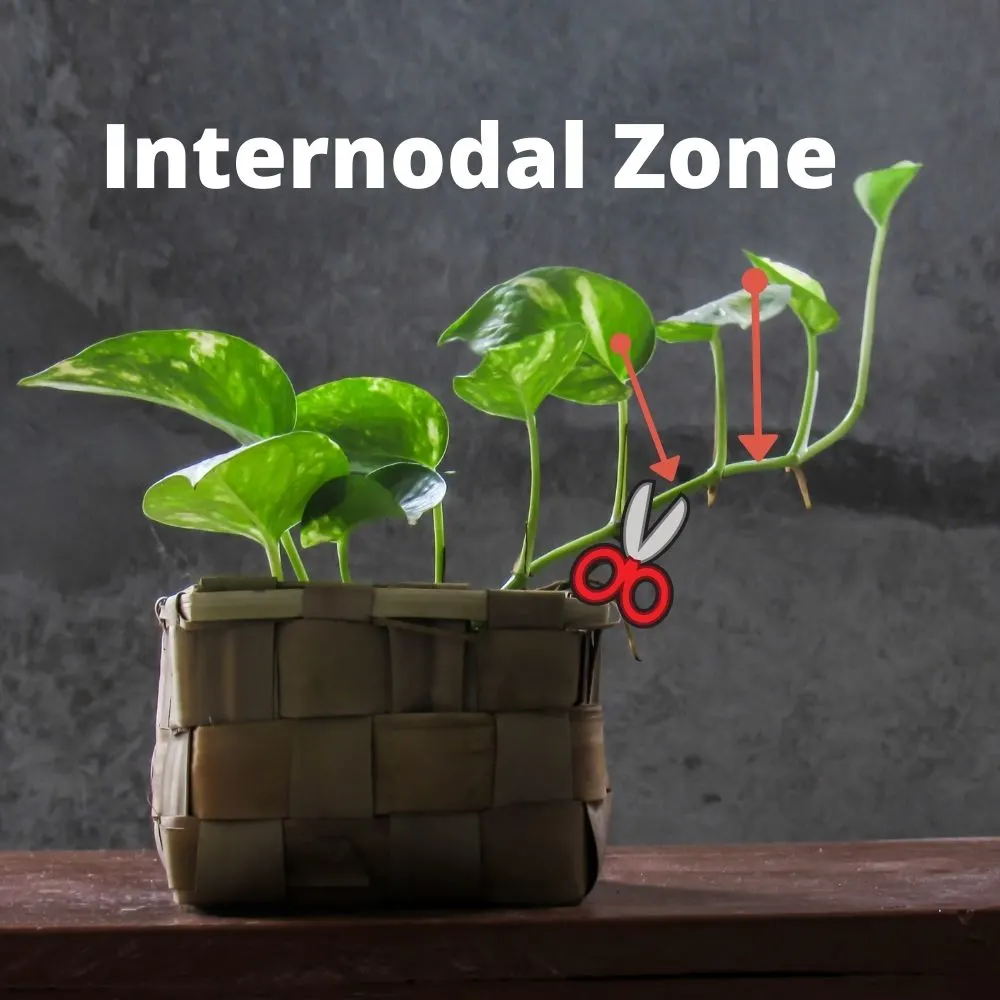
- Place the node into a jar with water. Use tap water that has settled 24 hours in the jar to dissipate chemicals harmful to the neon.
- Set the jar in a well lit area.
- After several weeks roots will grow. Allow the roots to get an inch or more in length.
- Plant gently and firmly into pot with proper soil mix.
- Make sure to keep the soil moist until the roots begin to set into the soil.
Notes
watch our video below for a video discussion of the care of scindapsus pictus.
Is Scindapsus poisonous?
Like other members of the Araceae family, scindapsus is mildly to moderately poisonous to cats, dogs and humans. This is not usually a fatal poisoning.
Symptoms of poisoning include pain and rashing or swelling around mouth. Foaming from the mouth. Nausea and stomach upset and skin irritations.
Keep your scindapsus plants aways for pets and children. If you see symptoms of poisoning call your vet or poison control center.
Follow Us:
Find us on YouTube, Instagram , Pinterest and TikTok! We love to Plant chat. We also comment, like and occasionally share your content to our daily stories. We’d love to see your plants. Share your joy in your houseplants. Happy Planting!
Related Content:
Recent Posts:
Thank you so much for taking the time to visit the contented plant! You can read more about the scindapsus pictus
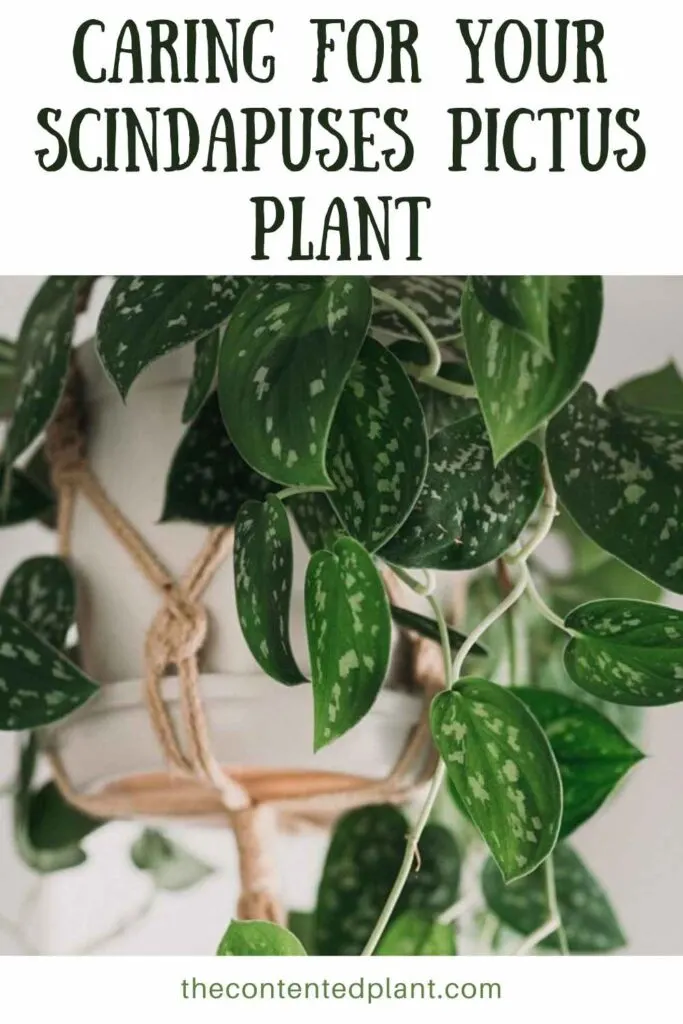

Pothos-Epipremnum aureum-(Devils Ivy) - The Contented Plant
Wednesday 23rd of March 2022
[…] Silver Pothos is also known as Scindapsus. The leaves are fuzzy and have silvery variegation […]
How to Propagate Pothos Plants - The Contented Plant
Monday 31st of January 2022
[…] The scindapsus pictus […]